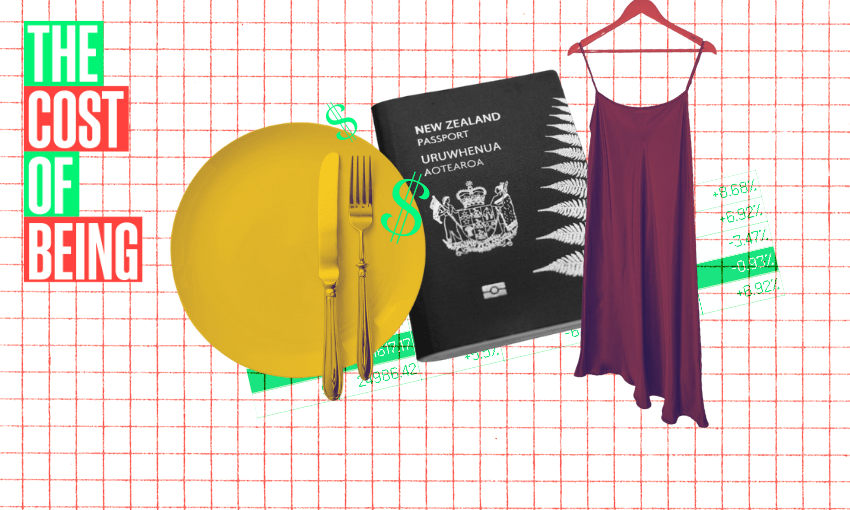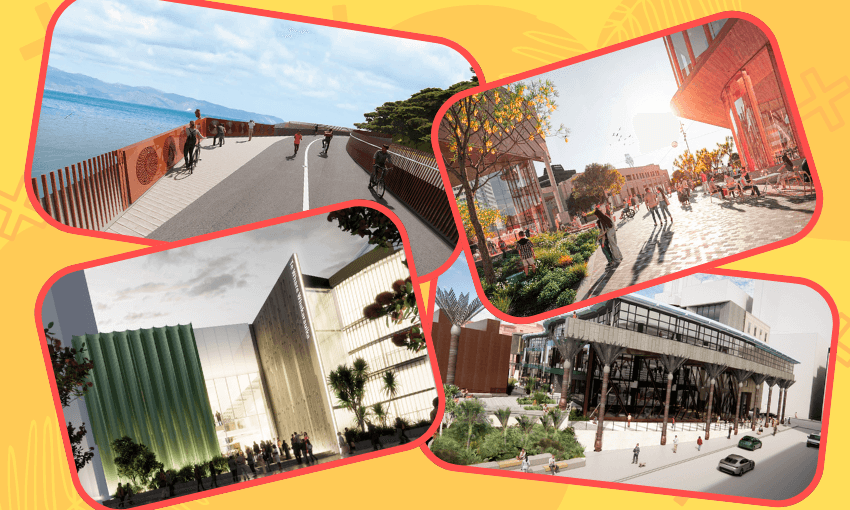As part of our series exploring how New Zealanders live and our relationship with money, a restaurant owner describes the financial pressures of owning a hospitality business right now.
Want to be part of The Cost of Being? Fill out the questionnaire here.
Gender: Female.
Age: 34.
Ethnicity: South-Asian born in NZ.
Role: I work three jobs – commercial director for a publication (working part time), part time work in the fitness space, plus business owner of a restaurant (but I don’t pay myself here).
Salary/income/assets: All up around 100k, because I don’t pay myself wages from my own business (yet).
My living location is: Urban.
Rent/mortgage per week: Weekly mortgage $506 each (there are two of us living here).
Student loan or other debt payments per week: No loans or debt but own a business so if the business doesn’t do well, I have to cover the expenses and wages of my staff from personal pocket.
Typical weekly food costs
Groceries: About $250-300 a week for two people. It has gone down now that we own a restaurant business so we eat staff meal at work and don’t need to cook dinner at home.
Eating out: We are always working so don’t find time to eat out much anymore – but when we do go out / if we can afford it, it’s probably once or twice a month to catch up with family or friends, and about $100-120 per person. Not including tips.
Takeaways: Maybe $30-40 each on the weekend when we feel lazy.
Workday lunches: Very rare to buy lunch during the work week. If I do, it’s maybe once every two weeks and about $10-15.
Cafe coffees/snacks: Make coffee at home.
Other food costs, eg garden: We own a restaurant so lots of food costs – if we can’t pay from business account, it comes from personal account.
Savings: Been dwindling on savings because I have had to cover my business costs from my own pocket due to the economic slowdown and hospitality business not doing well.
I worry about money: Always.
Three words to describe my financial situation: Anxious, tired, desperate.
My biggest edible indulgence would be: I don’t really have one. My business is a restaurant and I get the best food there (my partner is a chef) so I never need to go elsewhere to indulge, to be honest!
In a typical week my alcohol expenditure would be: Nil – work early mornings and late nights, seldom drink as I can’t let myself be hungover or groggy. If socialising on a day the restaurant isn’t open, maybe two drinks max. But this isn’t every week.
In a typical week my transport expenditure would be: Petrol around $80 a week in gas, Ubers about $30-40 if my partner is using the car (two rides a week).
I estimate in the past year the ballpark amount I spent on my personal clothing (including sleepwear and underwear) was: $2,000. I don’t shop often – maybe once a year I do a big haul, but I have a pretty good built up wardrobe from the past when I used to live overseas and made money back then lol.
My most expensive clothing in the past year was: $400 silk dress to attend a wedding.
My last pair of shoes cost: Pair of black leather loafers for $200.
My grooming/beauty expenditure in a year is about: This one is hard. I do a big shop for skincare about twice a year. Probably spend about $4,000 a year all up, which probably isn’t a lot compared to people I know.
My exercise expenditure in a year is about: I teach at a fitness studio so I get a membership which is free for instructors. Running shoes about $250, I also get discounted fitness clothing as an instructor or sometimes gifted so that’s lucky and helpful.
My last Friday night cost: I worked at my restaurant – $14 for an Uber to get to work.
Most regrettable purchase in the last 12 months was: Nothing – I only buy what I really need.
Most indulgent purchase (that I don’t regret) in the last 12 months was: Haven’t let myself indulge before I opened a business (also bought a house the same month we decided to open the business) but I did attend a friend’s bachelorette and wedding overseas this year and travelled all through Europe for a few weeks after the wedding and that cost about $10-12k (flights, accom, expenses dining out, gifts, some minimal personal shopping).
Travel is probably the one thing I happily spend money on but I hadn’t travelled overseas in two years before the wedding this year because we too busy saving to buy a house plus setting up and starting my business. We have just booked a trip for my partner and I (he hasn’t travelled overseas for leisure in about four years) to South America for his belated 40th and my birthday over the Christmas holiday break as it’s the only time we can shut down the restaurant but we are now quite stressed about saving for that trip too considering the current situation of the business and hospitality industry and spending our own personal money to keep the business afloat.
One area where I’m a bit of a tightwad is: If I do go out for drinks (seldom these days), I limit to two max (also if I’m driving it helps keep the drinks to only one or two). Back in the day before the house and business, I would splash out on drinks.
Five words to describe my financial personality would be: Responsible – only purchase what’s necessary.
I grew up in a house where money was: Hard-earned, came from a very humble family where my immigrant parents worked hard to make ends meet but also tried to give us kids what we wanted, so we never felt we missed out, but my parents worked and still work very hard. They also never told us the financial situation as children so we wouldn’t worry.
The last time my Eftpos card was declined was: Never – I never spend what I don’t have. Credit cards are for accumulating points and not for buying things with money I don’t have.
In five years, in financial terms, I see myself: Hopefully better than now, owning successful business, but probably living overseas where there are more tourists to keep the economy afloat. New Zealand is too small of a country and way too expensive to live in if you don’t come from money or have a high-salaried double income family, but have a mortgage and a small business to run plus want to eventually raise a family.
Describe your financial low: Right now. I have lived in four countries and have never felt such struggle financially until this year. With a business that is struggling in this economic crisis, having to top up the business bank account with my own money. Having to work three jobs to keep up mortgage and business expenses – I’m burnt out but have to keep pushing.
I would love to have more money for: Saving for security/retirement, to start a family.
I give money away to: Charities and fundraisers – not a lot but I try to give as often as I can. I know I’m struggling financially but there are people in situations far worse than mine. It is important to give back if you can.






